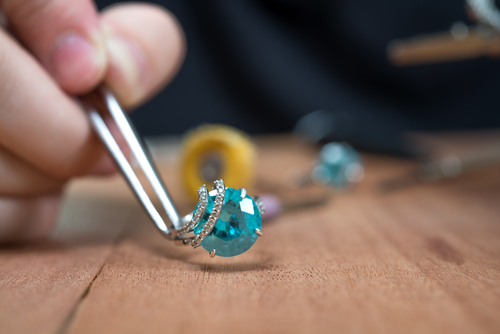

Colored Diamonds Facts
Colored diamonds are mined from the Earth and can be created in laboratory environments, which mimic the conditions in which they naturally develop. They can be found in virtually any shades of the rainbow, and the Gemological Institute of America lists 27 distinct hues for fancy colored diamonds.
The array of diamond hues available allows jewelers to match color names with fashionable nicknames that are in vogue. For instance, brown diamonds are called as champagne diamonds, yellow diamonds as canary diamonds, and orange diamonds as pumpkin diamonds.
These nicknames are used for the colored gemstones purely to make them more appealing. Depending on the jeweler’s definition of the prevailing fashion and what is fashionable, these nicknames could change too. For instance, some jewelers use “chocolate” instead of “champagne” to refer to brown diamonds.
These gemstones get their color from the presence of chemical elements or some sort of peculiarity as is the case with chameleon diamonds. Even a 1 carat diamond necessitates plenty of carbon atoms to bond. All the atoms should be carbon in order to form a colorless diamond; even the slightest of quirk makes a colored diamond.
Nitrogen’s presence creates a yellow colored diamond; a bit of boron gives it blue color; natural radiation from adjacent rocks trap electrons and makes its surface color green; whereas red or pink hues are thought to be because of changes to electron structure during the journey to the surface.
Laboratory conditions can also create diamonds by replicating the things nature contributes to their formation. Even color treatments on the gems are performed by laboratories in order to augment their color. For instance, a touch yellowish diamond requires a thin blue coat in order to neutralize the actual color hue and give it the impression of a higher color grade. The irradiation process can turn a natural diamond’s color more red, blue, green, brown, pink, or yellow.
The color grades to diamonds are issued by GIA. The institute describes fancy diamonds’ color in 3 ways – pure spectral colors are described as Hue; darkness and lightness as Tone; and the purity and strength of the color on a neutral to vivid scale as Saturation. The natural radiation as well as pressure can make diamonds’ color more intense. Another interesting fact about colored diamonds is that each color has a symbolism.